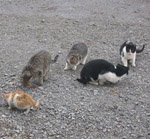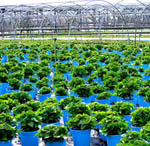Plant a tree to save a fish: riparian woodlands as stream temperature regulators
 Climate,
Climate,  Fish,
Fish,  Forest,
Forest,  Freshwater
Freshwater  Brown trout (Salmo trutta) chilling out.For freshwater fish like the brown trout, daily fluctuations in stream temperatures can be a matter of life or death.
Brown trout (Salmo trutta) chilling out.For freshwater fish like the brown trout, daily fluctuations in stream temperatures can be a matter of life or death.
For example, the brown trout faces an upper thermal limit of 24-30° Celsius. In England, daily maximum water temperatures can frequently exceed that level, and with climate change expected to warm streams as much as 4° Celsius over the coming century, the situation is likely to get even more dire for many species of fish.
However according to a new study in the journal River Research and Applications, riparian trees and shrubs can play a major role in alleviating this problem. Samantha Broadmeadow and fellow researchers measured stream water temperature and corresponding riparian forest cover along rivers in southern England over a 3-year period.
They found that the level of riparian shade had a strong effect on moderating the daily variability in water temperature and limiting the number of days per year that maximum temperatures exceeded lethal limits for brown trout.
The authors write, "We suggest that riparian shade moderates maximum water temperatures in these catchments via reduction of direct insolation and the consequent suppression of the amplitude of diel temperature."
Based on these findings they recommend that riparian woodlands be expanded to protect trout and other sensitive aquatic species from extreme water temperatures.
They found that maintaining 40% riparian forest cover along stream lenghts of 100m to 1km could potentially keep maximum temperatures below the initial lethal limit for brown trout. Maintaining 80% cover could substantially reduce the number of days that maximum water temperatures exceed optimal levels for brown trout growth.
Of course, resource managers need to consider the broader implications of any habitat alterations. For example, the authors note that the southern damselfly requires open areas and could be negatively affected by excessive tree planting. Nevertheless, the researchers believe that targeted tree planting can help moderate stream water temperatures while maintaining a mosaic of forested and open riparian areas.
--Reviewed by Rob Goldstein
Broadmeadow, S., Jones, J., Langford, T., Shaw, P., & Nisbet, T. (2010). The influence of riparian shade on lowland stream water temperatures in southern England and their viability for brown trout River Research and Applications DOI: 10.1002/rra.1354




Reader Comments